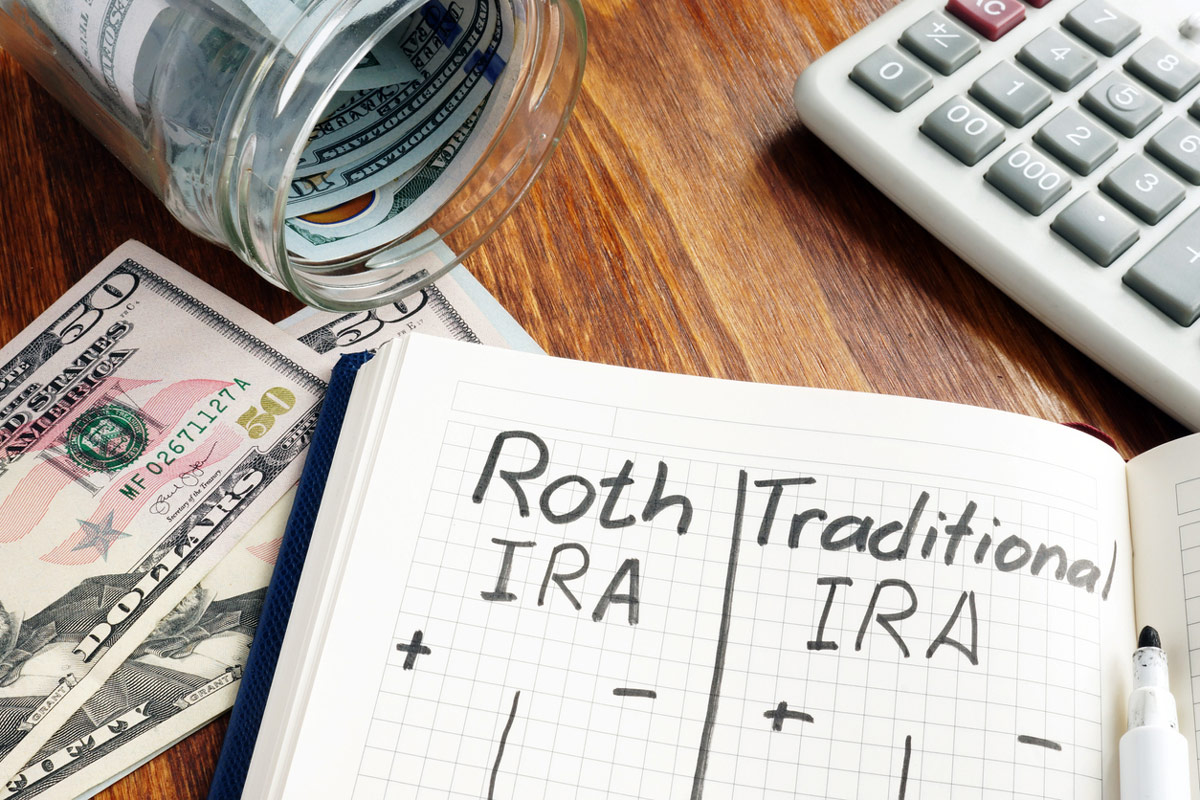When it comes to retirement savings account types, there are two main choices: traditional or Roth. Although income limits restrict who is allowed to contribute to a Roth IRA, no one is required to choose a Roth over a traditional account. However, that’s about to change. A new law will soon force some older, higher-income 401(k) plan investors (as well as those using 403(b) plans, 457 (b) plans, or the Thrift Savings Plan) to direct more of their contributions into Roth accounts.
While implementation of the new law has been put on hold for a couple of years, it raises a question that’s worth considering for all investors who are eligible for a Roth account: No matter your age or income, if you’ve been favoring a traditional account, would directing at least some of your retirement contributions to a Roth be beneficial?
A little background
With traditional IRAs and workplace retirement accounts, the money you contribute lowers your taxable income now. When you make withdrawals from the account in retirement, you will owe ordinary income taxes on the money.
With Roth accounts, it’s just the opposite. The money you contribute doesn’t lower your taxable income now, but no taxes are due when you take money out of the account in retirement.
Eligibility to contribute to a Roth IRA depends on your income. In 2023, eligibility for single filers begins phasing out at a modified adjusted gross income (MAGI) level of $138,000 and ends at $153,000. For couples filing a joint tax return, eligibility begins phasing out at a MAGI of $218,000 and ends at $228,000. (In contrast to a Roth IRA, if your employer offers a Roth 401(k) plan account, there are no income-based restrictions on who can contribute.)
Pay me now or pay me later
If you’re eligible for a Roth, how do you choose between that and a traditional account? The conventional wisdom is that Roth accounts are best suited for lower-paid (usually younger) workers who believe their income will be higher in retirement. The idea is to pay taxes on the contributions now when you’re in a low tax bracket and then enjoy tax-free income in retirement when you may be in a higher bracket.
Traditional accounts are seen as best for higher-income workers who believe their income will be lower in retirement. The idea is to take the tax break on contributions now when you’re in a high tax bracket and then pay taxes on the withdrawals in retirement when you may be in a lower bracket.
A new catch for catch-up contributions
Workers age 50 or older can “catch up” on their retirement savings by contributing more to their workplace retirement plans than younger workers. In 2023, they can contribute $7,500 more than the $22,500 limit for others. Until recently, if an employer offered traditional and Roth accounts, catch-up contributions could go to whichever account type the worker chose.
However, beginning in 2026, 401(k) plan investors age 50 and older who earn more than $145,000 and make “catch-up” contributions will be required to make those contributions to Roth accounts. From the federal government’s perspective, that means more tax revenue sooner. Of course, for impacted workers, that means higher tax bills, so this tax-law change comes as unwelcome news.
However, some financial advisors are arguing that such investors will be glad in the end. Quoted in The Wall Street Journal, one said, “I tell [affected clients], ‘Congress is doing you a favor by forcing you to save in a Roth account. In the long run, you’ll likely come out ahead.’ Another tells clients, “That tax deduction feels good now but often leads to burdens later on.”
And that leads to this question for all Roth-eligible investors: Even if you now prefer traditional retirement accounts, would it be beneficial to make more use of a Roth?
A diversified tax strategy
The standard thinking about traditional vs. Roth accounts is still generally relevant. It’s best to pay taxes when you’re in a lower tax bracket. So, Roth accounts still make sense for younger workers who have not yet hit their peak earning years, and traditional accounts still make sense for higher-earning investors.
However, if all of your retirement savings is going into a traditional account, consider the following reasons why you may want to make more use of a Roth:
No one knows the future, including how long they will work or how high their income will be in retirement. If your retirement income turns out to be higher than you now expect, you’ll be glad to have some money in a Roth account.
No one knows how tax laws might change. Researchers at the University of Arizona say that since 1913, the tax rate for a couple making an inflation-adjusted $100,000 per year has changed 39 times. If tax rates go up, having some of your retirement savings in a Roth will be beneficial.
Once required minimum distributions (RMDs) kick in at age 73, that income could push you into a higher tax bracket. Those RMDs can also push you into a higher Medicare means-testing tier as well, leaving you paying higher premiums for Medicare Parts B and D, possibly substantially higher premiums.
When one spouse dies, the survivor’s new single-filer tax status may subject them to a higher tax rate at a lower income. In that case, it would be beneficial to have more money in a Roth account, which is not subject to RMDs, nor are taxes due on any money that is withdrawn.
If you want to pass some of the money in your retirement accounts to beneficiaries, Roth accounts provide a couple of benefits over traditional accounts. First, because there are no RMDs, you may be able to retain a higher balance to pass on. Second, your beneficiaries’ withdrawals will be tax-free.
Striking the right balance
If you have been chiefly or solely contributing to a traditional retirement account and are now persuaded to make more contributions to a Roth, how much should you contribute to each type?
University of Arizona researchers Scott Cederburg and David Brown studied this issue, primarily from the perspective that income tax rates may change, and came up with a rule of thumb that “produces near ideal results”: Add 20 to your age and put that percentage into a traditional account, with the rest going into a Roth. For example, a 40-year-old would contribute 60% to a traditional retirement account and 40% to a Roth.
Cederburg said the research has surprising implications for higher-income investors. “More than likely, these investors have been told to allocate all of their funds into a traditional retirement account, but that advice doesn’t consider the risks of tax rates increasing.” He said investing some of their funds into a Roth account would eliminate some of that risk.
There’s an additional Roth-friendly factor to consider. For those able to contribute the maximum allowed, a Roth IRA effectively shelters more income than a traditional IRA. For example, a married couple filing jointly in the 22% tax bracket who makes a $7,500 Roth contribution is effectively getting a tax benefit on $9,615 rather than $7,500 — in addition to the $7,500 that will grow tax-free in the account, an additional $2,115 in tax has already been paid ($9,615 x 0.22 = $2,115). Or stated the other way, a $7,500 contribution to a Traditional IRA is less valuable than $7,500 in a Roth because a portion of the Traditional contribution will later be lost to taxes. (For a detailed explanation of this admittedly complex idea, see Traditional IRA vs. Roth: Which Maximizes Retirement Income?)
The wisdom of Solomon
Diversification is a principle found in Scripture (Ecclesiastes 11:2), and it applies to more than how you construct your investment portfolio. It applies to taxes, too. Since no one knows the future, funding a mix of taxable and tax-free retirement accounts looks like a very wise goal.








